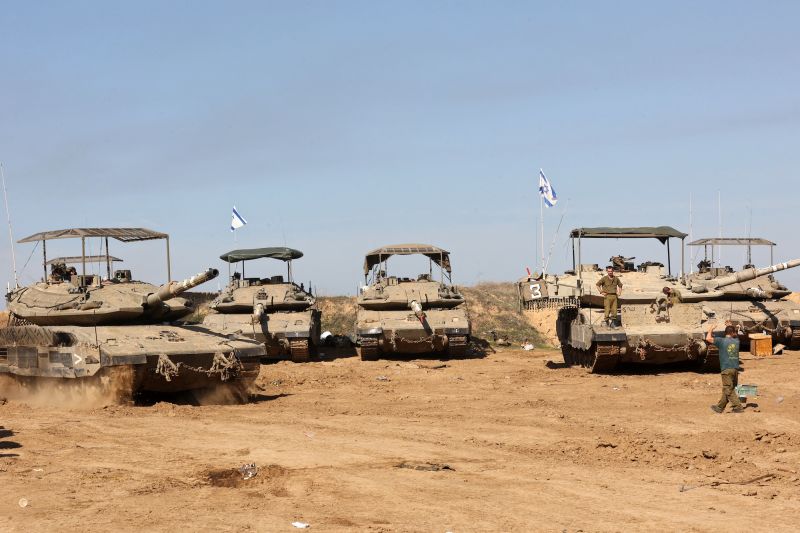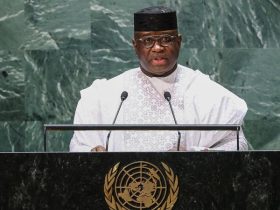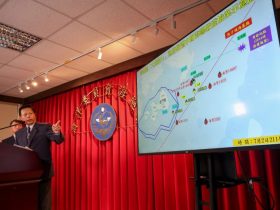Israel’s military restarted fighting against Hamas in Gaza after a week-long truce to allow hostages to be released broke down on Friday.
The Israel Defense Forces (IDF) said it had “resumed combat operations” and accused Hamas of violating the truce first by firing rockets toward Israeli territory.
Smoke could be seen billowing across parts of the densely populated enclave as the IDF declared it was once again “out to destroy” Hamas.
The resumption of fighting marks the end of a brittle truce between the warring parties that allowed for the release of 110 Israeli women and children, as well as foreign nationals, who had been taken hostage by Hamas during its October 7 attack, and for the release of about 240 Palestinian prisoners from Israeli jails.
Israeli Prime Minister Benjamin Netanyahu’s office said Hamas “didn’t respect its obligation to release today all the abducted women and launched rockets towards the citizens of Israel.”
His office said 137 people are still being held hostage in Gaza, including 117 men and 20 women. Two of the abductees are under the age of 18 and 10 are aged 75 and over, it said.
Netanyahu said his government remained committed to achieving its war aims, which he said were releasing the hostages, eliminating Hamas and ensuring that Gaza never again constitutes a threat to Israelis.
The Hamas-controlled Government Media Office in Gaza blamed the international community – and the United States in particular – for the resumption of fighting, saying they bear “responsibility for the crimes of the ‘Israeli’ occupation and the continuation of the brutal war against civilians, children and women in the Gaza Strip.”
At least 32 people were killed in Gaza and dozens injured after Israeli strikes began again on Friday, according to a spokesperson for the Hamas-controlled Ministry of Health in Gaza.
With the resumption of fighting could come an expansion of Israel’s military operations in Gaza, which have until now focused predominantly in the north. The IDF dropped leaflets in the southern city of Khan Younis on Friday, calling it a “fighting zone” and telling residents to “evacuate immediately.”
Israel repeatedly told residents of northern Gaza to move south of Wadi Gaza – the wetlands that roughly split the territory – for their safety. Khan Younis is located south of that line.
Before the truce began last week, Israel defense minister Yoav Gallant had warned Israel will aim to “dismantle Hamas wherever it is,” which “will include both the north and the south” of Gaza.
If the truce is unable to be revived, the resumption in fighting will reignite a festering conflict that has wrought devastation to Gaza and triggered a humanitarian catastrophe that was described by the UN Secretary-General as “a crisis of humanity.”
Hours before the latest fighting erupted, the United States pressured Israel to shield Palestinian civilians in one of the most significant diplomatic moves yet in the more than 50-day conflict.
Secretary of State Antony Blinken laid out American requirements in private talks in Jerusalem with Netanyahu and his war cabinet. But he also made the Biden administration approach clear in unmistakable language in public.
“I underscored the imperative of the United States that the massive loss of civilian life and displacement of the scale that we saw in northern Gaza not be repeated in the south,” Blinken said in a televised press conference in Tel Aviv.
End of brief respite
Israel had repeatedly stated it would resume its military assault in Gaza if Hamas could not produce 10 hostages for each extra day of pause. As the 7 a.m. local time deadline (midnight ET) passed, the hostilities resumed almost immediately.
Both Israel and Hamas had indicated earlier they were prepared for fighting to resume. “We should be prepared for a quick transition into full scale fighting at any point, today, tomorrow, at any moment. As soon as we maximize the move to return hostages we will resume fierce fighting across the whole Gaza Strip,” Gallant said Thursday.
Hamas’ armed wing on Thursday also told their forces to “remain on high combat readiness” in the final hours of the truce, the Al-Qassam Brigades said on Telegram.
The hard-negotiated truce, which came into effect on November 24, marked the first major diplomatic breakthrough in the latest conflict which began when Hamas gunmen stormed into Israel on October 7, killing some 1,200 people, mostly civilians, and seizing more than 200 hostages, in the deadliest such attack faced by the country since its founding in 1948.
Since October 7, more than 14,800 people, including 6,000 children, have been killed in Gaza after Israel launched attacks from the air and the ground, according to the Palestinian Ministry of Health in the West Bank, using data from Hamas-run health authorities in the Strip.
The brief pause in hostilities allowed for more than 2,700 trucks carrying thousands of tons of desperately needed aid to cross from Egypt into Gaza since October 21, according to an Egyptian official. But even that was completely inadequate to meet the needs of the more than two million people in Gaza, many of whom are displaced, aid agencies said.
Renewed fighting threatens once again to shut off that one supply line into Gaza – where residents were already struggling to find shelter, food and clean water while under constant bombardment from Israeli airstrikes.
There had been hopes that the truce, originally slated to last just four days, could be extended into an eighth. But negotiators had warned that extending the truce would be mired in logistical and strategic challenges.
Hamas claimed on Thursday it was having trouble locating 10 women and children hostages – a condition that Israel insisted must be met – to extend the truce.
According to a source briefed on the talks, negotiations are still ongoing with Qatari and Egyptian mediators despite the resumption of Israeli airstrikes on Gaza.
“Hamas wants to set new terms for the men and the Israeli soldiers,” said Danny Danon, adding that “we are close to the end” of the current phase of the deal.
“They want a different equation. Now we have one Israeli hostage for three Palestinian prisoners, and they want to try and change that ratio. As long as they can provide hostages, we are willing to talk,” he said.
In the seven-day pause in fighting, 86 Israelis and another 24 foreign nationals were released. Another Israeli dual citizen was also freed outside of the agreed-upon deal.
As of Thursday, 240 Palestinians had been freed from Israeli prisons – mainly women and minors. Under the terms of the truce deal, Israel has to free three Palestinians for every Israeli hostage released.
This is a developing story and will be updated.






